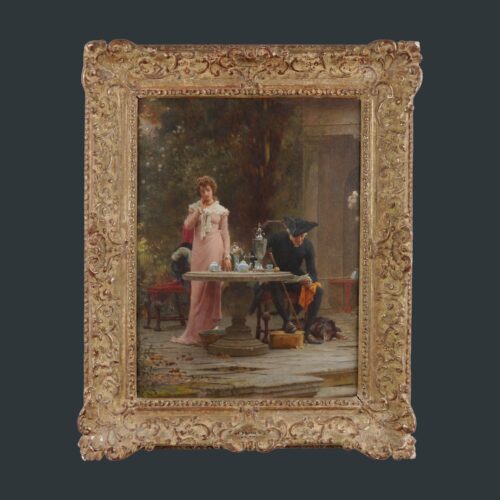Born in 1877, the painter Kees van Dongen was a leading figure of the avantgarde. He is best known for his sensual portraits of women. At times aligned with Fauvism, the French movement championed by Henri Matisse, Van Dongen nevertheless developed his own personal idiom.
Van Dongen grew up in Rotterdam in a bourgeois household. At 16, he enrolled full-time at the city’s Akademie voor Beeldende Kunsten, where he was taught in the naturalistic style favoured by the Academy. It was during this period that Van Dongen first began to paint Rotterdam’s prostitutes living in the Red Light District, a subject to which he would return throughout his career.
After completing his studies, Van Dongen moved to Paris. His paintings dating from this period are a beautiful experimentation. Van Dongen explored Impressionistic, Fauvist and Expressionistic styles.
It was his association with Fauvism that had the most profound impact upon Van Dongen’s bourgeoning practice. Instead of a neutral palette, he began to use bright, daring tonalities, electric yellows, garish reds and absinthe greens. These exaggerated juxtapositions, employed in his depictions of prostitutes, brought the artist fame. He embarked upon a series of trips, first in Europe, and then later to Morocco and Egypt. These trips to North Africa profoundly influenced his visual vocabulary, inspiring the artist to incorporate more reds and to embrace more Orientalising imagery.
Alongside his portraits of aristocrats, actresses and elegant society ladies, Van Dongen painted the casinos, beaches and hotels that so enchanted the upper class. Throughout all, his colour palette remained dramatic and bold, what the poet Guillaume Apollinaire called ‘an intoxication, a dazzle,’ and he remained devoted to his principal subject: that of the woman.
Following World War II, Van Dongen moved to Monaco. He died in 1968 at his home in Monte Carlo.
















